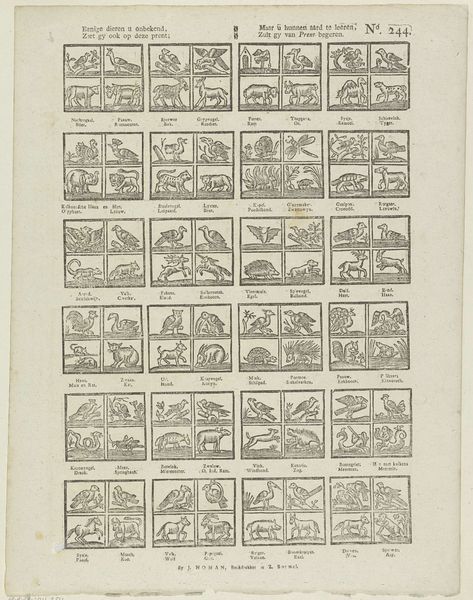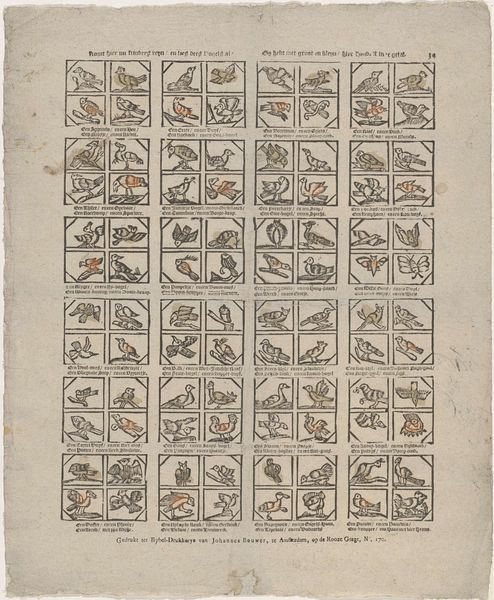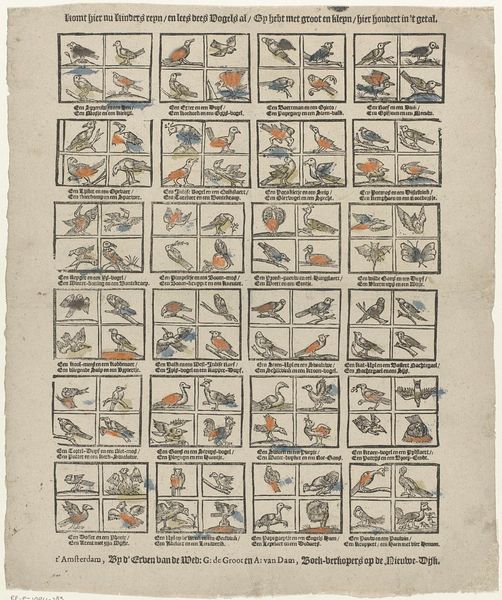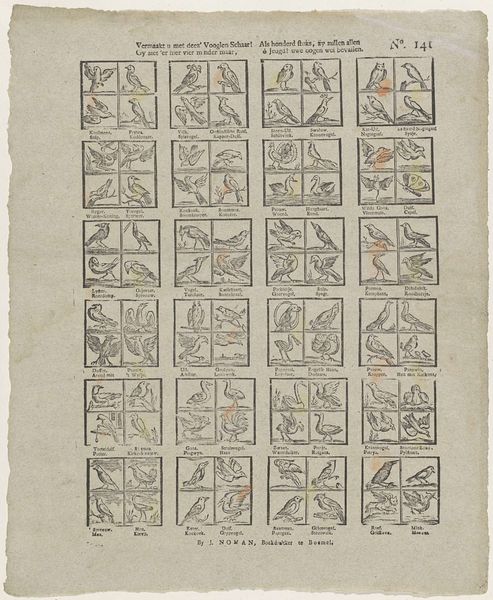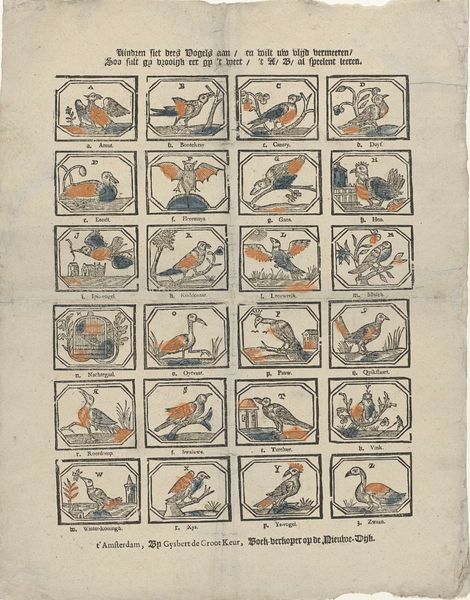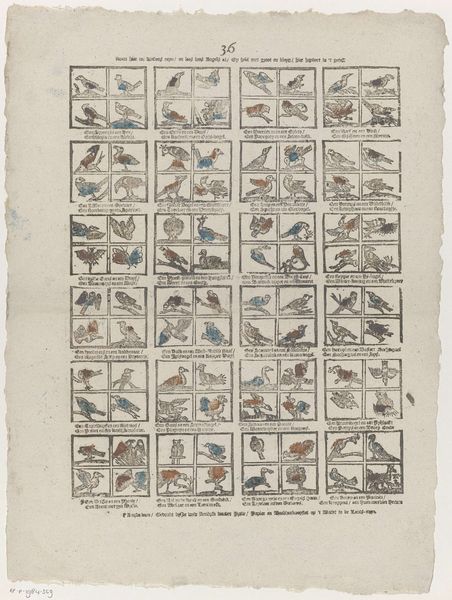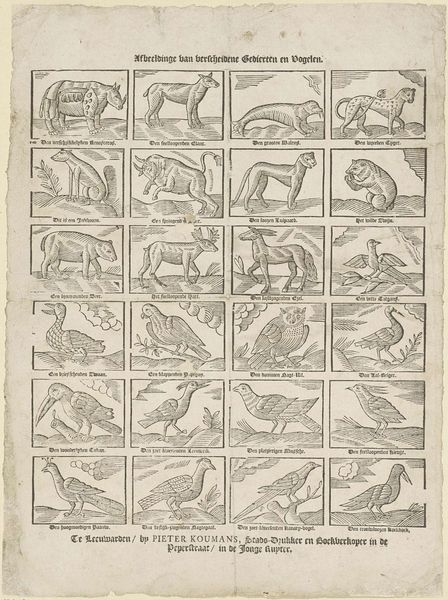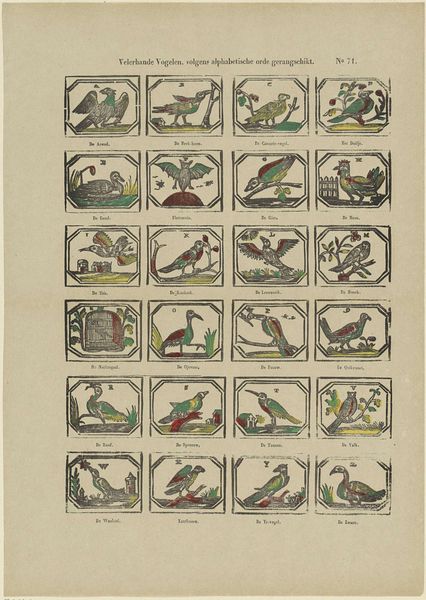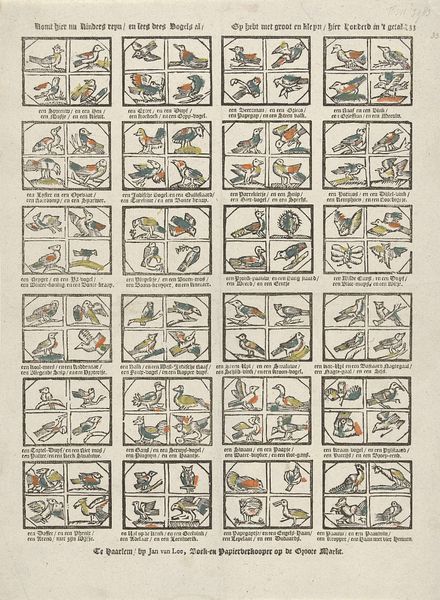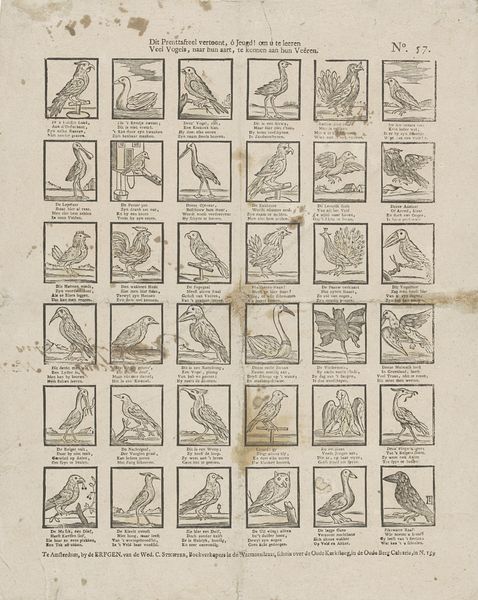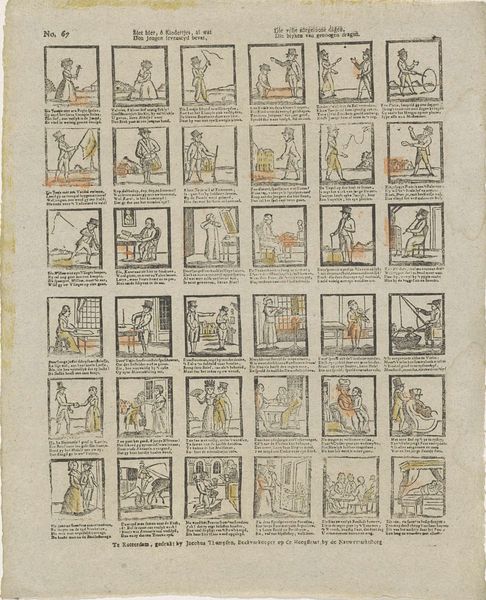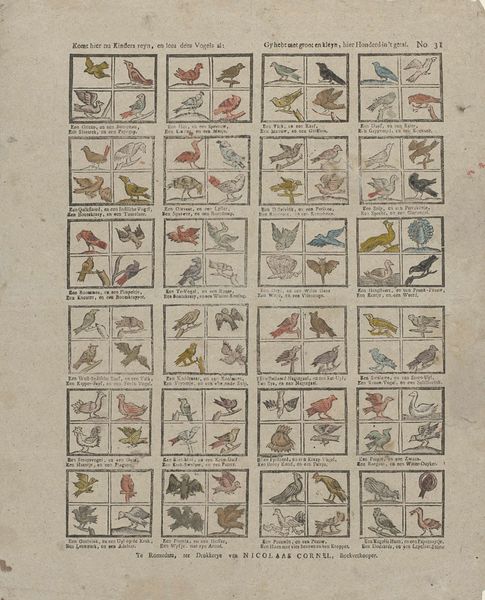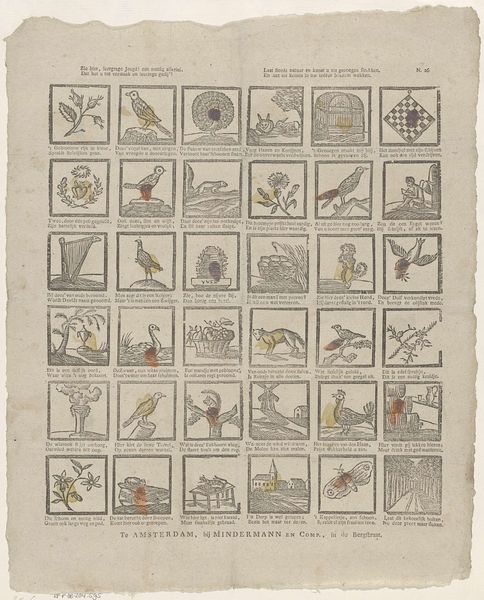
Komt hier nu kinders fyn en lees dees vogels al / Gy hebt met groot en kleyn / hier hondert in getal 1761 - 1804
0:00
0:00
ervendeweduwejacobusvanegmont
Rijksmuseum
print, paper, woodcut, engraving
#
animal
# print
#
bird
#
paper
#
woodcut
#
northern-renaissance
#
engraving
Dimensions: height 417 mm, width 305 mm
Copyright: Rijks Museum: Open Domain
Curator: The artwork before us, residing here at the Rijksmuseum, is a fascinating print from around 1761 to 1804. It’s attributed to Erven de Weduwe Jacobus van Egmont and carries a rather poetic title: "Komt hier nu kinders fyn en lees dees vogels al / Gy hebt met groot en kleyn / hier hondert in getal" - quite a mouthful! It appears to be a woodcut engraving on paper. Editor: My eye is immediately drawn to the stark, graphic quality of it. There's a real sense of pattern and repetition, but the crude rendering of each bird prevents it from feeling mechanical. The tonal range seems restricted which only adds to its aged character. Curator: Indeed. The use of woodcut and engraving reflects the popular printmaking techniques of the time. Prints such as these served a vital purpose in disseminating knowledge and shaping cultural perceptions, particularly concerning the natural world. It may have functioned as an early identification sheet for children, connecting images with the written names. Editor: Look at how the composition uses the grid to categorize the animals, while each little square containing different poses and behaviours. Despite their limited detail, each figure suggests movement with a surprising economy of line. Is it simply descriptive, or are there other aspects we should be paying attention to? Curator: One might read these birds symbolically. Birds have long held diverse meanings - freedom, messengers, omens, spirits. This print's intended use as a tool of instruction, coupled with the period's widespread symbolic language, opens a way to thinking about the possible cultural implications. The number itself - 100 birds in total - might signify abundance, or totality. Editor: Fascinating. This piece provides an opportunity to examine the basic formal devices employed by printmakers. A relatively simple medium that requires skilled precision that we can still value today, centuries later. Curator: Absolutely, and considering its presence here at the Rijksmuseum, this work gives us a tangible connection to how images played an integral role in shaping worldviews. Editor: Indeed. A second look prompts one to question whether a set of defined elements such as line and shape, which here take the form of flying creatures, could signify more.
Comments
No comments
Be the first to comment and join the conversation on the ultimate creative platform.
